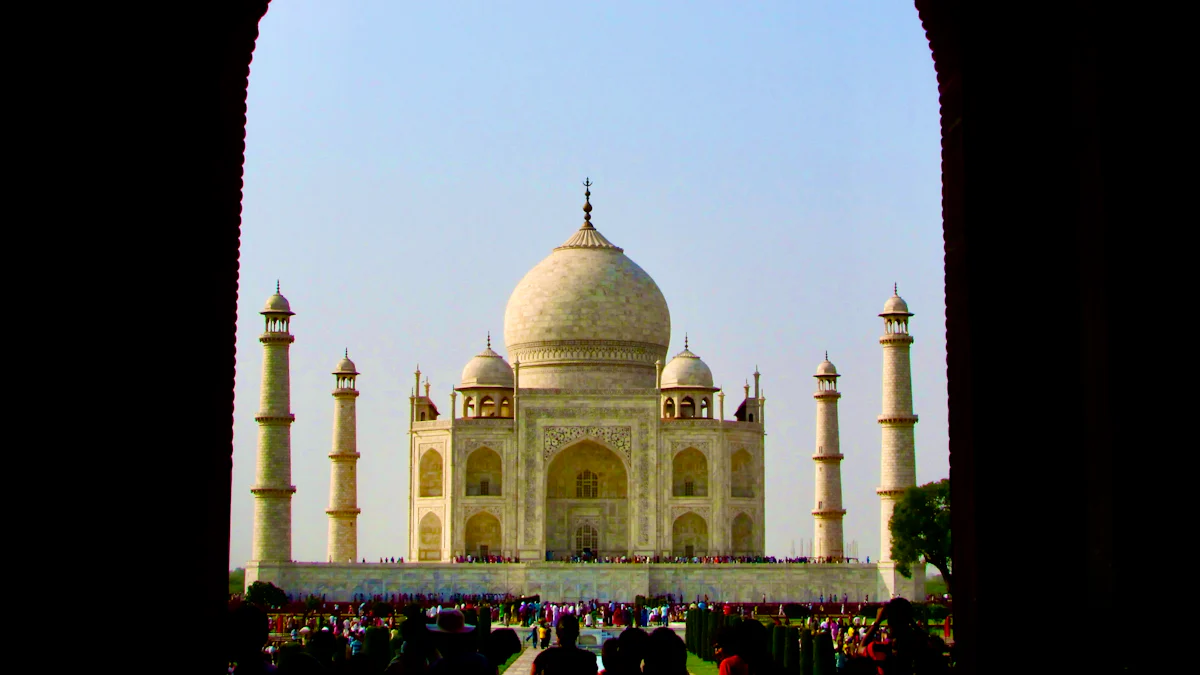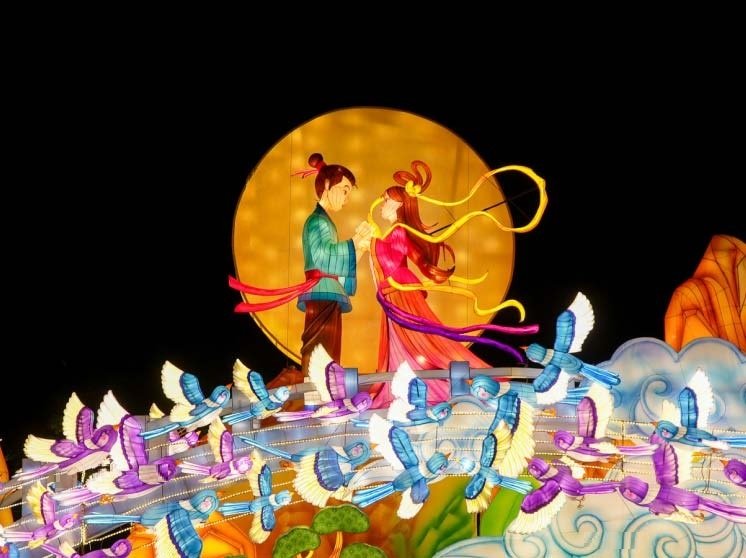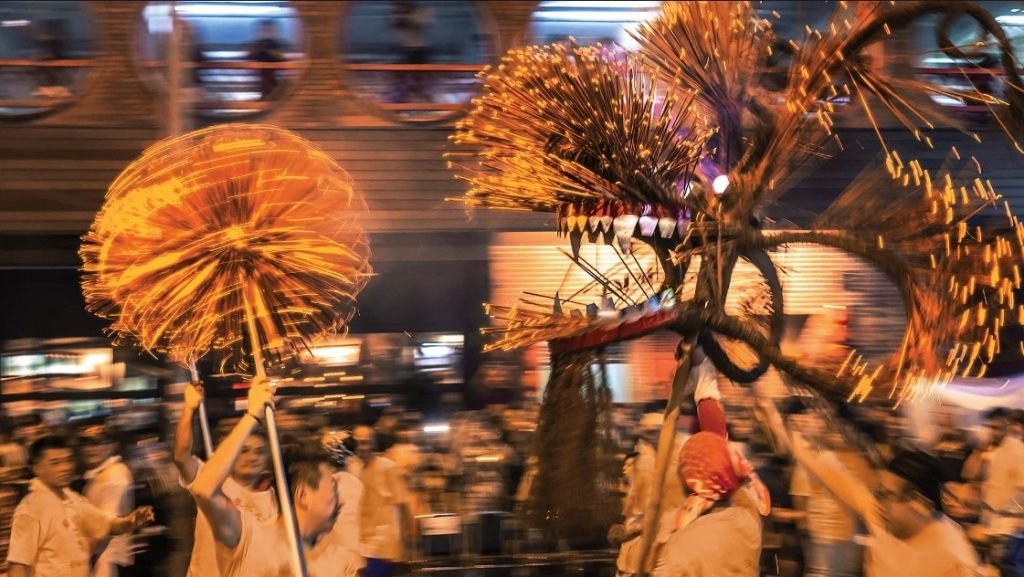Travel & Events
7 Wonders of the World Explore A Historical Adventure
Mysteries of the 7 Wonders
The allure of visiting the 7 Wonders of the World is a dream for many travelers, offering a glimpse into the rich tapestry of human history and ingenuity. These iconic landmarks stand as testaments to civilizations long past, each holding its own unique story waiting to be discovered. From the majestic Great Wall of China to the romantic Taj Mahal, these wonders beckon adventurers to explore their mysteries and marvel at their grandeur.
Despite their Historical Significance, traveling to these wonders has become more accessible than ever before. With advancements in transportation and tourism infrastructure, there are now affordable travel options that cater to a wide range of budgets, making it possible for more people to embark on this extraordinary journey through time.
What truly sets apart each Wonder is the unparalleled cultural experience it offers. Whether immersing oneself in the ancient Mayan civilization at Chichén Itzá or witnessing the spiritual aura surrounding Christ the Redeemer in Rio de Janeiro, each Wonder provides a unique opportunity to connect with different facets of human heritage and creativity.
The Great Wall of China: A Monumental Journey
Exploring the Great Wall’s historical significance
The Great Wall of China stands as a monumental feat of human engineering and endurance, stretching over 5,500 miles across the vast landscapes of China. Constructed over a period of more than 2,300 years, this architectural marvel is not only an impressive defensive structure but also a symbol of China’s rich history and culture.
The sheer scale and complexity of the Great Wall make it a remarkable sight to behold. As the largest of the seven wonders of the world, its grandeur is unmatched, drawing visitors from around the globe to witness its deceptive beauty. Each brick and stone that forms this ancient barrier tells a story of dynasties past and the enduring spirit of the Chinese people.
Beyond its physical presence, the Great Wall holds deep historical significance for China. It served as a vital military defense system, protecting against invasions and preserving the cultural heritage of the region. Moreover, it symbolizes unity and strength, reflecting the resilience and determination ingrained in Chinese history.
Visiting the Great Wall offers not only a chance to marvel at its architectural splendor but also an opportunity to connect with centuries-old traditions and values. It serves as a reminder of the ingenuity and craftsmanship of ancient civilizations while highlighting the importance of preserving cultural landmarks for future generations to appreciate.
Chichén Itzá: Gateway to Mayan Civilization
Uncovering the mysteries of Chichén Itzá
Chichén Itzá, located on the Yucatán Peninsula in Mexico, serves as a gateway to the ancient Mayan civilization, offering a glimpse into a world shrouded in mystery and wonder. This archaeological site is home to 26 Mayan ruins, with the iconic pyramid known as El Castillo standing out as the most symbolic structure.
Exploring Chichén Itzá allows visitors to immerse themselves in the rich history and culture of the Mayan people. The intricate carvings, detailed sculptures, and impressive architecture found throughout the site showcase the advanced knowledge and craftsmanship of this ancient civilization. Each stone tells a story of a bygone era, inviting travelers to unravel the secrets hidden within these ancient ruins.
One of the most fascinating aspects of Chichén Itzá is its natural acoustics, created by the design of El Castillo. This pyramid’s unique construction enhances sound waves, allowing whispers at one end of the plaza to be heard clearly at the other end—a testament to the ingenuity and precision of Mayan engineering. This acoustic phenomenon adds an extra layer of mystique to an already enchanting site.
Visiting Chichén Itzá not only offers a glimpse into Mayan history but also provides a profound cultural experience that highlights the enduring legacy of this remarkable civilization. The preservation of these ruins serves as a reminder of our shared human heritage and the importance of safeguarding these historical treasures for future generations.
Petra: The Rose-Red City
Journey through the ancient city of Petra
Petra, known as the Rose-Red City due to its stunning rock-cut architecture, is a treasure trove of history and beauty nestled in the desert landscapes of Jordan. This ancient city boasts unique structures carved into sandstone cliffs, creating a mesmerizing blend of natural and man-made wonders that have captivated travelers for centuries.
Exploring Petra offers a glimpse into the prehistoric world of the Nabataean civilization, showcasing their advanced architectural techniques and artistic prowess. The intricate facades of buildings such as the Treasury and the Monastery stand as testaments to the skill and creativity of these ancient craftsmen, drawing visitors into a world steeped in mystery and grandeur.
One of the highlights of a visit to Petra is the challenging hike to reach the Monastery, a hidden gem tucked away in the rugged terrain. This monumental structure, with its imposing facade and commanding presence, provides a sense of awe and wonder as travelers marvel at the sheer scale and intricacy of this ancient masterpiece.
Swiss explorer John Lewis Burckhardt aptly described Petra as a remarkable archaeological site that offers insight into the rich history of the Nabataean civilization. His words resonate with visitors who are enchanted by the beauty and historical significance of this UNESCO World Heritage Site, where every corner holds a story waiting to be discovered.
Petra’s allure lies not only in its architectural splendor but also in its ability to transport visitors back in time, allowing them to walk in the footsteps of ancient civilizations and experience firsthand the legacy left behind by those who once called this magnificent city home.
Machu Picchu: Lost City of the Incas
Discovering the mysteries of Machu Picchu
Machu Picchu, often referred to as the Lost City of the Incas, is a mesmerizing archaeological site perched high in the Andes Mountains of Peru. This hidden citadel, shrouded in mist and mystery, offers visitors a glimpse into the fascinating world of the Inca civilization and their remarkable architectural prowess.
The discovery of Machu Picchu is a tale of intrigue and adventure. Forgotten by humanity for centuries, this ancient marvel remained hidden until explorer Hiram Bingham stumbled upon its ruins in 1911. Since then, it has captured the imagination of travelers worldwide, drawing them to unravel the secrets held within its stone walls.
Exploring Machu Picchu provides insights into the advanced engineering skills of the Inca people. The precision with which they constructed terraces, temples, and residential areas on steep mountain slopes showcases their deep connection to nature and their ability to harmonize with the environment. The intricate stonework and sophisticated water management systems found at Machu Picchu are testaments to the ingenuity and craftsmanship of this ancient civilization.
Similar to how the Colosseum in Rome is revered for its architectural grandeur, Machu Picchu stands as a testament to human creativity and resilience. Shannon aptly notes that this lost city was completely forgotten until its rediscovery by Bingham, highlighting both its historical significance and enigmatic allure.
Visiting Machu Picchu is not just a journey through history but also a spiritual experience that allows travelers to connect with the mystical energy that permeates this sacred site. As one wanders through its terraces and temples, surrounded by breathtaking mountain vistas, it becomes clear why Machu Picchu holds a special place among the wonders of the world.
Christ the Redeemer: Iconic Symbol of Faith
The significance of Christ the Redeemer
Christ the Redeemer, standing tall atop Corcovado Mountain overlooking Rio de Janeiro, is not just a statue but a powerful symbol of Christianity and faith. This iconic monument embodies both religious significance and cultural importance, serving as a beacon of hope and inspiration for millions around the world.
The symbolism of Christ the Redeemer extends beyond its religious connotations to represent unity, peace, and love. Its outstretched arms embrace the city below, offering a sense of protection and comfort to all who gaze upon it. As one of the New Seven Wonders of the World, this statue holds a special place in the hearts of Brazilians and visitors alike, symbolizing resilience and faith in the face of adversity.
Emotionally and spiritually, Christ the Redeemer holds immense value for those who visit or behold it from afar. The sheer size and majesty of the statue evoke feelings of awe and reverence, inviting contemplation and reflection on matters greater than oneself. Whether bathed in sunlight or illuminated against the night sky, Christ the Redeemer radiates a sense of peace and serenity that transcends religious boundaries.
Just as the Taj Mahal in Agra stands as a testament to eternal love, Christ the Redeemer stands as a testament to unwavering faith and devotion. Its presence overlooking Rio de Janeiro serves as a reminder that amidst life’s challenges, there is always hope and solace to be found in something greater than ourselves.
Visiting Christ the Redeemer is not just a sightseeing experience but a spiritual journey that leaves an indelible mark on those who witness its magnificence firsthand.
Taj Mahal: Epitome of Love and Beauty
Exploring the romance of the Taj Mahal
The Taj Mahal, a masterpiece of Mughal architecture in Agra, India, stands as a timeless symbol of eternal love and beauty. Built by Emperor Shah Jahan in memory of his beloved wife, Empress Consort Mumtaz Mahal, this architectural marvel is not just a monument but a testament to the power of love and devotion that transcends time.
The architectural beauty of the Taj Mahal is unparalleled, with its white marble facade shimmering in the sunlight like a radiant jewel. Every intricate detail, from the delicate carvings to the symmetrical gardens, reflects the deep love and affection that inspired its creation. As one gazes upon this iconic mausoleum, they cannot help but be moved by the sheer grandeur and elegance that exudes from every corner.
Beyond its aesthetic appeal, the Taj Mahal holds immense cultural importance and historical significance. It serves as a symbol of Indo-Islamic architecture, blending elements from Persian, Islamic, and Indian styles to create a harmonious masterpiece. The mausoleum’s design reflects not only the artistic achievements of the Mughal Empire but also their reverence for beauty and symmetry.
The story behind the Taj Mahal adds another layer of romance to its allure. Emperor Shah Jahan’s unwavering love for Mumtaz Mahal is immortalized in this architectural wonder, where every aspect of its design speaks to their enduring bond. Visiting the Taj Mahal is not just an architectural pilgrimage but a journey into a love story that has captured hearts around the world for centuries.
As visitors wander through the pristine gardens and marvel at the intricate details of the Taj Mahal, they are transported to a realm where love knows no bounds and beauty knows no limits—a place where time stands still in honor of an everlasting love.
The Cultural Heritage of Humanity Preserving Our Legacy
The 7 Wonders of the World stand as enduring testaments to human ingenuity, creativity, and the remarkable achievements of ancient civilizations. These iconic landmarks not only showcase the architectural marvels of their time but also serve as reminders of the cultural richness and historical significance that have shaped our world.
Preserving and appreciating the historical and cultural heritage embodied by the 7 Wonders is essential in maintaining a connection to our past and understanding where we come from. By safeguarding these treasures, we ensure that future generations can continue to be inspired by the legacy left behind by our ancestors.
Exploring and learning from ancient civilizations through sites like the 7 Wonders allows us to delve into the depths of history, uncovering stories of triumphs, challenges, and innovations that have influenced societies for centuries. By continuing this legacy of exploration and discovery, we honor the resilience and creativity of those who came before us while gaining valuable insights into our shared human experience.
Travel & Events
Warped Tour 2025: Festival Grounds at RFK Campus
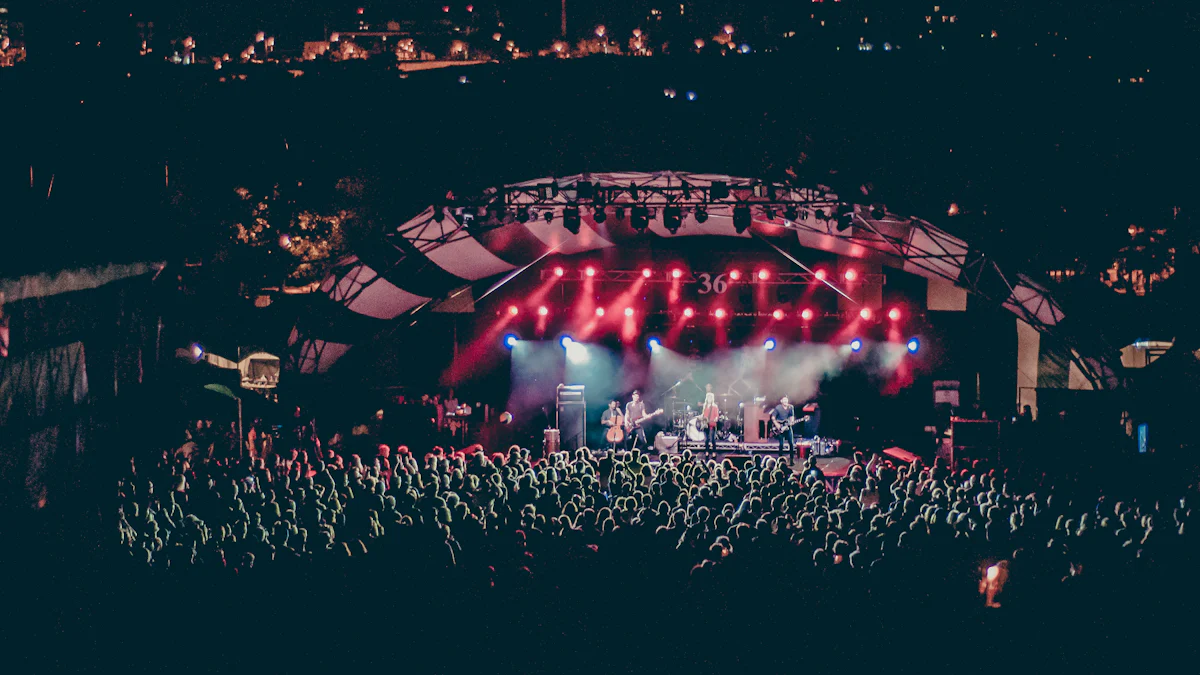
The Warped Tour has been a staple in the music festival scene since its inception. Over the years, it has grossed an impressive $367.2 million and sold approximately 10.6 million tickets. As you gear up for the Warped Tour 2025, you can feel the excitement in the air. This year marks the 30th anniversary, a significant milestone that promises to bring together legendary artists and fresh talent. With events planned in Washington, D.C., Long Beach, and Orlando, the anticipation is palpable. You won’t want to miss this celebration of music and culture.
Warped Tour 2025 Event Details

Cities and Dates
Get ready to mark your calendars! The Warped Tour 2025 is making its grand return with events in three vibrant cities. You can catch the action in:
- Washington, D.C.
- Long Beach, California
- Orlando, Florida
Each city will host the festival over two exciting days. Here’s the schedule you need to know:
- Washington, D.C.: June 14-15
- Long Beach, California: July 26-27
- Orlando, Florida: November 15-16
These dates promise a summer filled with unforgettable music experiences. Make sure you plan your trip accordingly to join the celebration.
Number of Bands
The Warped Tour 2025 lineup is set to be massive! You can expect between 70 to 100 bands at each stop. This impressive number ensures a diverse mix of both established and emerging artists. It’s a chance for you to discover new favorites and enjoy performances from bands you already love.
In comparison to previous years, the 2025 tour aims to surpass expectations. Past tours have featured around 50 to 60 bands, but this year, the organizers are pulling out all the stops. The 30th anniversary promises to be bigger and better, offering you more music and more memories.
Stay tuned for the official lineup announcement in March. You won’t want to miss the chance to see which bands will take the stage at the Warped Tour 2025.
Warped Tour 2025 Anticipated Lineup
Notable Past Acts
Warped Tour has always been a platform for some of the most iconic bands in the music scene. Over the years, you’ve seen legendary performances that have left a lasting impact. Bands like Blink-182, Fall Out Boy, and Paramore have graced the stage, creating unforgettable memories.
Highlight of past performers
These bands didn’t just perform; they set the stage on fire. We The Kings delivered one of the best sets, with lead singer Travis expressing heartfelt gratitude to his bandmates, the crowd, and Kevin Lyman. You could feel the energy and passion in every note.
“Hands down it was one of the best sets of the day.”
Influence on the music scene
The influence of these acts extends beyond their performances. They have shaped the music scene, inspiring countless artists and fans alike. Andrew Oross, a devoted attendee, described the experience as:
“Very exciting and definitely brings a lot of people together in a way to express themselves with their type of music.”
Potential Performers for 2025
As you look forward to Warped Tour 2025, the buzz around potential performers is electrifying. While the official lineup remains under wraps, rumors are swirling about who might take the stage.
Rumored bands and artists
Speculation is part of the fun! You might hear whispers about bands like Doll Skin and Silent Planet making an appearance. These bands have left a mark with their previous performances. Fans rave about their energy and connection with the audience.
Doll Skin: “The ladies of Doll Skin are without a doubt some of the sweetest and most down to earth people I’ve met.”
Silent Planet: “If you haven’t seen Silent Planet, I highly suggest you do so.”
Fan expectations and excitement
The anticipation is building, and you can feel the excitement in the air. Fans are eagerly waiting to see if their favorite bands will be part of this monumental event. The 30th anniversary promises surprises and unique twists that will make Warped Tour 2025 an unforgettable experience. Get ready to be part of something special!
Ticket Information
Presale Process
How to access presale tickets
Getting your hands on presale tickets for the Warped Tour 2025 is a breeze. Mark your calendar for October 24th, when presales kick off at 12 p.m. ET/9 a.m. PT. Head over to the official Vans Warped Tour website to secure your spot. Keep an eye on their social media channels for any updates or changes. This way, you won’t miss out on the chance to grab your tickets before they sell out.
Benefits of purchasing presale tickets
Why should you consider presale tickets? They offer several perks. First, you get early access, ensuring you don’t miss out on this epic event. Presale tickets often come with exclusive offers or packages, adding more value to your purchase. Plus, buying early means you can plan your trip and accommodations well in advance, reducing last-minute stress. It’s a win-win situation!
Pricing Details
Breakdown of ticket prices
Let’s talk numbers. The Warped Tour 2025 offers full weekend passes starting at an all-inclusive price of $149.98. This breaks down to a $119.99 ticket price plus $29.99 in fees. This pricing structure ensures transparency, so you know exactly what you’re paying for. It’s a fair deal for two days packed with incredible music and unforgettable experiences.
Comparison with previous years
How does this year’s pricing stack up against previous years? The Warped Tour has always prioritized accessible pricing, and 2025 is no different. Compared to other festivals like When We Were Young, which charges $325, the Warped Tour remains a budget-friendly option. This commitment to affordability allows more fans to join in the celebration, making it a must-attend event for music lovers everywhere.
The Warped Tour 2025 is shaping up to be an unforgettable event. Celebrating its 30th anniversary, this festival promises a unique blend of legendary acts and fresh talent. You can feel the excitement building as fans eagerly await the lineup announcement. Stay tuned for updates and make sure you’re ready for ticket sales. Mark your calendar for presale dates and secure your spot at this iconic music festival. Don’t miss out on the chance to be part of this historic celebration. Get ready to rock and roll!
Travel & Events
Columbus Day 2024 Observance Controversy
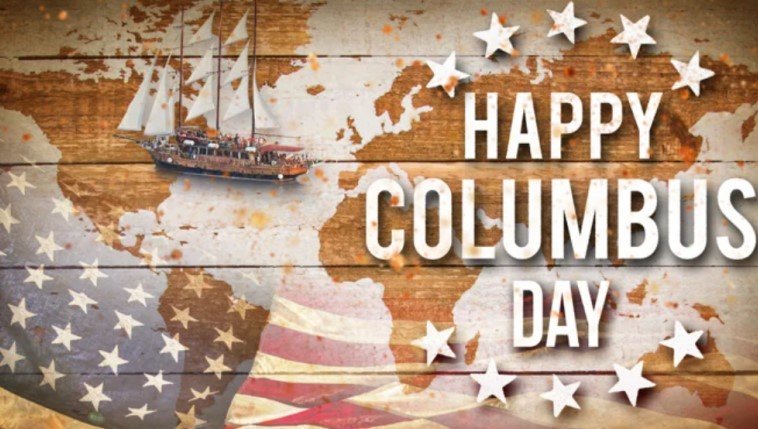
Columbus Day, celebrated on the second Monday of October, marks Christopher Columbus’ arrival in the Americas in 1492. For 2024, this federal holiday falls on October 14. Traditionally, Columbus Day has been viewed as a celebration of exploration, particularly within Italian-American communities, due to Columbus’ Italian heritage. However, in recent years, this holiday has become increasingly controversial, prompting debates about its historical significance and ethical implications.
Columbus Day 2024: Evolving Traditions and Controversies
In the last few decades, Columbus Day has faced growing opposition due to the colonialism, enslavement, and devastation brought upon Indigenous populations following Columbus’ arrival. As a result, Indigenous Peoples’ Day has emerged as an alternative observance, focusing on the resilience and contributions of Native American communities. Several U.S. cities, states, and educational institutions have embraced this alternative, either alongside or in place of Columbus Day.
As of 2024, 17 states and over 100 cities officially recognize Indigenous Peoples’ Day, signaling a growing nationwide movement to honor Indigenous cultures and histories. The Biden administration has issued proclamations recognizing Indigenous Peoples’ Day since 2021, although it is not yet a federal holiday.
The Historical Background of Columbus Day
Columbus Day was first proclaimed as a national holiday in 1937 under President Franklin D. Roosevelt. The Knights of Columbus, an influential Catholic fraternal organization, played a significant role in promoting this holiday as a way to recognize the achievements of Italian immigrants in the U.S. Since 1971, the holiday has been observed on the second Monday of October, giving it a permanent place on the federal calendar.
However, Columbus’ legacy is far from universally celebrated. The explorer is often criticized for his role in the violent conquest of Indigenous lands, the initiation of transatlantic slavery, and the decimation of Native populations through disease and exploitation. These historical realities have contributed to the movement to reframe the narrative surrounding Columbus’ arrival.
Trending Searches: Columbus Day vs. Indigenous Peoples’ Day
As the holiday approaches in 2024, popular search queries reflect the ongoing public debate. Some of the most searched topics include:
- What is open or closed on Columbus Day 2024?
People are curious about which businesses, banks, and government offices are affected by the holiday. Federal offices and the USPS are closed, while most retail businesses remain open. - Why is Columbus Day controversial?
Many are searching for details about the criticisms of Columbus Day, particularly its connection to colonial violence and the marginalization of Native Americans. - What is Indigenous Peoples’ Day?
A rising interest in understanding this alternative holiday has prompted questions about its history, significance, and how it’s celebrated. - How is Columbus Day celebrated in Italian-American communities?
Italian-American pride remains a significant aspect of Columbus Day, with parades and cultural festivals held in cities like New York and Chicago. - Which states have replaced Columbus Day with Indigenous Peoples’ Day?
Growing interest surrounds the states and cities that have officially recognized Indigenous Peoples’ Day over Columbus Day.
Columbus Day Celebrations and Cultural Significance
Despite the controversy, Columbus Day remains an important holiday for many Italian-Americans, who view it as a celebration of their heritage. Across the country, parades, street fairs, and cultural events are held to honor Columbus’ voyage and the contributions of Italian immigrants. These celebrations often feature Italian cuisine, music, and performances, offering a positive reflection on the immigrant experience in the U.S.
However, Indigenous Peoples’ Day celebrations also spotlight Native American culture and history. In cities and regions that observe this holiday, events such as traditional dance performances, art exhibitions, and educational workshops highlight the achievements and resilience of Indigenous communities.
The Future of Columbus Day
The debate over Columbus Day versus Indigenous Peoples’ Day is unlikely to resolve anytime soon. As more states and cities adopt Indigenous Peoples’ Day, the holiday’s future remains a topic of national conversation. The movement to replace Columbus Day reflects broader societal shifts toward inclusivity and reexamining historical figures through a modern lens.
FAQs
What is the date of Columbus Day 2024?
Columbus Day will be observed on October 14, 2024.
Why is Columbus Day controversial?
Columbus Day has become controversial due to its association with the colonization of Indigenous lands, the introduction of slavery, and the devastating impact on Native populations.
Which states recognize Indigenous Peoples’ Day instead of Columbus Day?
Seventeen states, including California, Oregon, and New Mexico, officially recognize Indigenous Peoples’ Day as a state holiday.
Is Indigenous Peoples’ Day a federal holiday?
While President Biden has issued proclamations recognizing Indigenous Peoples’ Day since 2021, it is not currently a federal holiday.
How is Columbus Day celebrated?
Italian-American communities celebrate Columbus Day with parades, cultural events, and festivals, particularly in cities like New York and San Francisco.
What is the future of Columbus Day?
The future of Columbus Day is uncertain, as the movement to replace it with Indigenous Peoples’ Day continues to gain momentum across the U.S.
Travel & Events
Mid-Autumn Festival 2024: Date, Traditions, and Celebrations

Mid-Autumn Festival, Moon Festival, or Mooncake Festival: This is one of the most celebrated holidays all across East Asia in general, with principal festivities shared by China, Taiwan, Vietnam, Singapore, and Malaysia. This is a sign, literally on the 15th day of the 8th month in the lunar calendar; it means that the moon falls on that period in its fullest and brightest form, a symbol for unity, harmony, and prosperity. Typically this is a time when families come together to eat and view the beauty of the full moon.
The history, mythology, and traditions behind the Mid-Autumn Festival have been expounded upon in this post.
-

 Health And Fitness3 months ago
Health And Fitness3 months agoPepsi Zero Sugar vs Diet Pepsi: Which Is Healthier?
-

 News3 months ago
News3 months agoLondon King Opens Up About Her Relationship with Rob Schneider
-

 News3 months ago
News3 months agoKolkata Doctor Case: Tragic Story of Dr. Moumita Debnath
-

 Travel & Events1 month ago
Travel & Events1 month agoWarped Tour 2025: Festival Grounds at RFK Campus
-

 News2 months ago
News2 months agoAir Canada Strike: Flight Cancellations and Delays Explained
-

 News3 months ago
News3 months agoSunita Williams’ Space Dilemma: Never Alone, Always Brave
-

 Sports3 months ago
Sports3 months agoArshad Nadeem Winning Moments Javelin Throw Final Highlights
-

 News2 months ago
News2 months agoGoonies Sequel: Original Cast Returns with New Surprises

